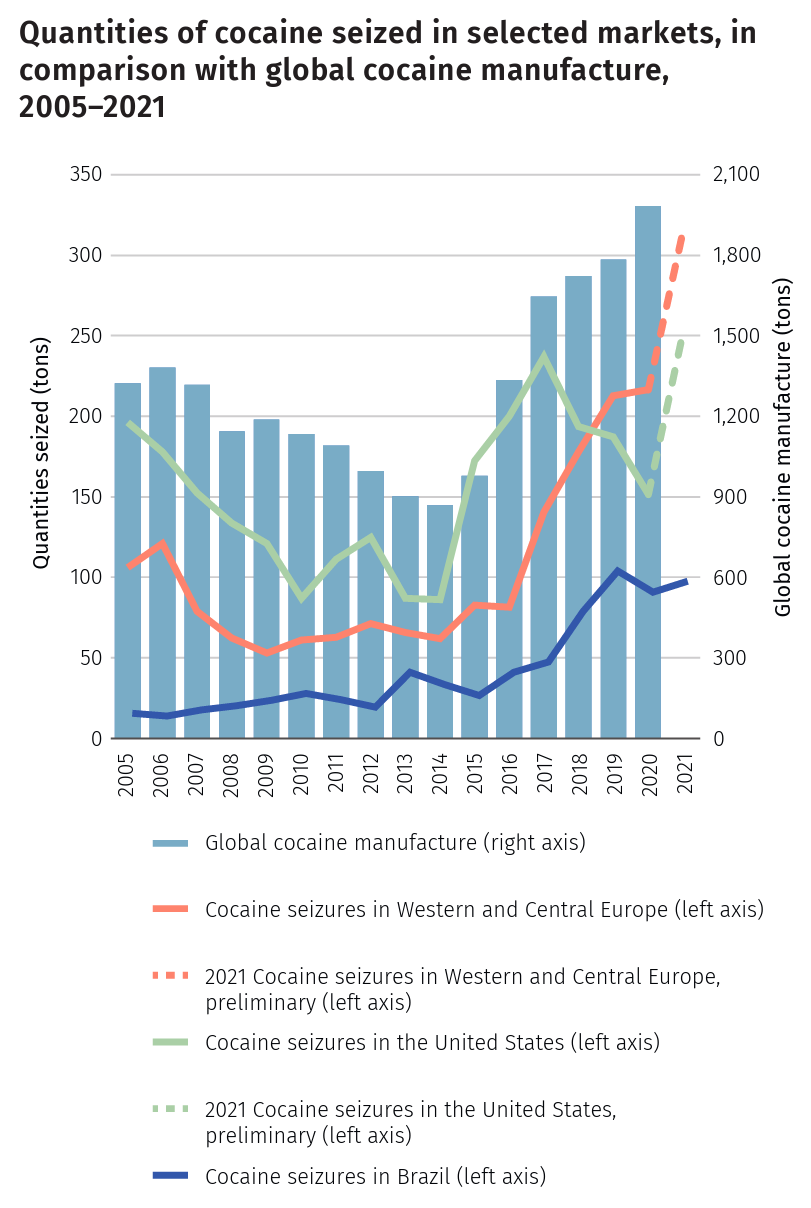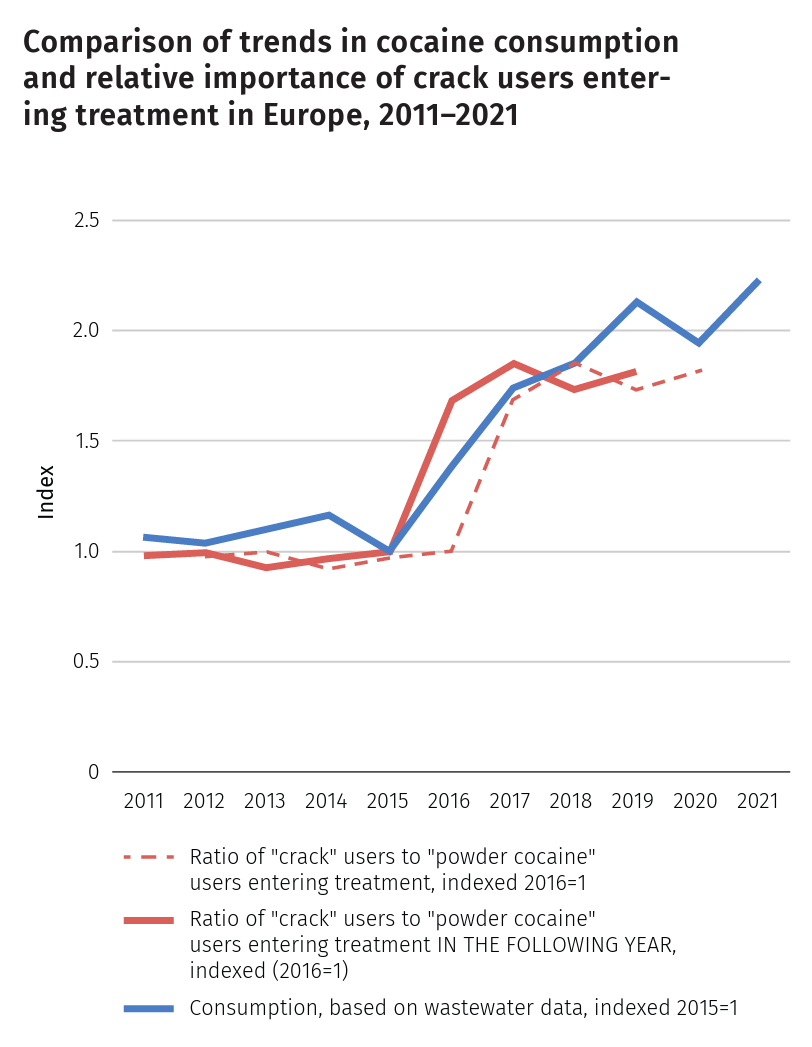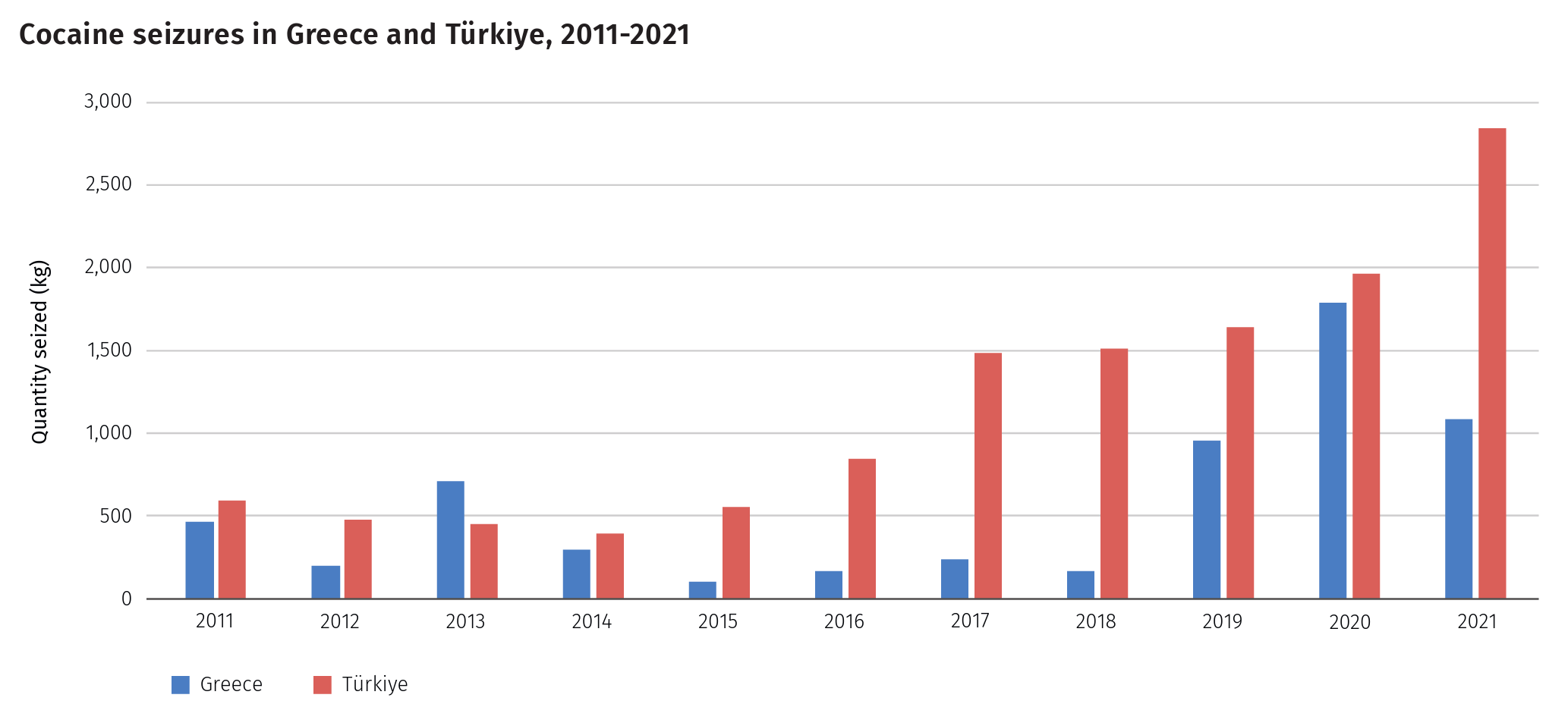Cocaine production is at its highest level on record, UN says – Coca cultivation soared 35 per cent from 2020 to 2021, a record high and the sharpest year-to-year increase since 2016

By Natasha Turak
16 March 2023
(CNBC) – Cocaine production is at its highest level on record, with demand rebounding post-pandemic and new trafficking hubs emerging, a report from the United Nations Office on Drugs and Crime found.
The U.N.’s Global Report on Cocaine 2023 says new hubs for trafficking in the multibillion-dollar industry have emerged in West and Central Africa in the last two years. New improvements and innovations in cultivation of the coca bush and conversion from coca plant to cocaine have also helped production boom — rising by 35% between 2021 and 2022 to record levels.
“The Covid-19 pandemic had a disruptive effect on drug markets. With international travel severely curtailed, producers struggled to get their product to market. Night clubs and bars were shut as officials ramped up their attempts to control the virus, causing demand to slump for drugs like cocaine,” the report said.
“However, the most recent data suggests this slump has had little impact on longer-term trends. The global supply of cocaine is at record levels,” it said. Almost 2,000 tons of cocaine were produced in 2020, a continuation of a “dramatic uptick in manufacture that began in 2014, when the total was less than half of today’s levels,” the report said.
Coca bush cultivation doubled between 2013 and 2017, and then rose sharply again in 2021, the report said. The process of converting coca bush to cocaine hydrochloride also saw significant improvements.
Cocaine production requires soaking harvested coca leaves in gasoline and other chemicals like ether, sulfuric acid, ammonia to allow the extraction of cocaine hydrochloride. The gasoline and solvents are then drained and the cocaine base solidifies into a paste, which is cooked until the liquid and other chemicals have evaporated, producing “bricks” containing cocaine hydrochloride.
Those bricks are packed and further sold and processed with additional chemicals like hydrochloric acid, ammonia and potassium salt to create powder cocaine.
Rising cocaine demand
Despite continued efforts by law enforcement to crack down on cocaine use, global demand for the drug has only grown.
“There has been a continuing growth in demand, with most regions showing steadily rising
numbers of users over the past decade. Although these increases can be partly explained by population growth, there is also a rising prevalence of cocaine use,” the report said.
At the same time, interceptions by authorities are on the up. And those law enforcement interceptions are actually rising at a higher speed than production, the report found, meaning that “interdiction has contained the growth of the global amount of cocaine available for consumption.”
Demand is still highest in North America, which constituted 30% of global demand for the drug in 2020, the highest proportion worldwide, according to the U.N. Central and South American and the Caribbean came second, making up 24% of cocaine users in 2020. Western and Central Europe came third at 21%, and a far fourth was the continent of Africa at 9% of global use.
Much of the known information on increases in cocaine has been found via analysis of wastewater data. [more]
Cocaine production is at its highest level on record, UN says

Need for enhanced cooperation to address cocaine surge highlighted at UNODC global report launch
VIENNA, Austria, 16 March 2023 (UNODC) – How to strengthen international responses to address challenges posed by record cocaine supply and surging demand was the focus of a panel discussion today to launch a new global report by the United Nations Office on Drugs and Crime (UNODC).
The hybrid event on the margins of the 66th session of the Commission on Narcotic Drugs presented the findings from The Global Report on Cocaine 2023, which was developed under the framework of the CRIMJUST Global Programme, funded by the European Union’s Service for Foreign Policy Instruments (FPI) as part of its Global Illicit Flows Programme (GIFP).
At the launch, speakers from Africa, Europe and the Americas shared perspectives on the health and security challenges posed by cocaine trafficking, as well as regional responses to the threats.
Chloé Carpentier, Chief of the Drug Research Section, Research and Trend Analysis Branch at UNODC, who presented the report findings, highlighted the potential for cocaine trafficking to spread beyond established markets: “The surging global cocaine market has the potential to trigger large expansions in new regions where cocaine use has been limited in the past, especially Africa and Asia.”
Floriana Sipala, Head of Unit, Organised Crime and Drugs, Directorate-General for Migration and Home Affairs of the European Commission, expressed concerns over the high availability of cocaine in the European Union and the rise in the use of its ports for cocaine trafficking. Moving forward, she advocated for increased international cooperation investigations to draw upon financial and criminal intelligence collection and sharing to disrupt organised crime groups and focus on high-level criminal targets as well as for stronger coordination to implement effective criminal justice responses in line with human rights.
Tofiq Murshudlu, Head of Coordination, UNODC Border Management Branch, which operates the CRIMJUST Programme. said: “This report is the result of both the UNODC Research’s Branch’s knowledge and the CRIMJUST Global Programme’s network of practitioners across transatlantic routes. Informed by both academia and operational intelligence, this report offers new ideas to coordinate evidence-based responses to the cocaine market. I urge Member States to seize this opportunity to band together to develop and implement multistakeholder strategies disrupting illicit trafficking across supply chains.”
The panel discussion also featured remarks by: Angela Martins, Acting Director, Social Development, Culture and Sports, African Union Commission, and Ambassador Adam Namm, Executive Secretary of the Inter-American Drug Abuse Control Commission, Organization of American States.
According to the report, coca cultivation soared 35 per cent from 2020 to 2021, a record high and the sharpest year-to-year increase since 2016. The steep growth in supply has been matched by a similar swelling in demand, with many regions showing a steady rise in cocaine users over the past decade.
The report examines the emergence of new hubs for cocaine trafficking as well as the modalities of cocaine traffickers, with findings showing that countries in Southeastern Europe and Africa – particularly those in West and Central Africa – are increasingly being used as key transit zones for the drug. Ports on the North Sea like Antwerp, Rotterdam, and Hamburg, meanwhile, have eclipsed traditional entry points in Spain and Portugal for cocaine arriving in Western Europe. Traffickers are also diversifying their routes in Central America by sending more and more cocaine to Europe, in addition to North America.
Need for enhanced cooperation to address cocaine surge highlighted at UNODC global report launch



